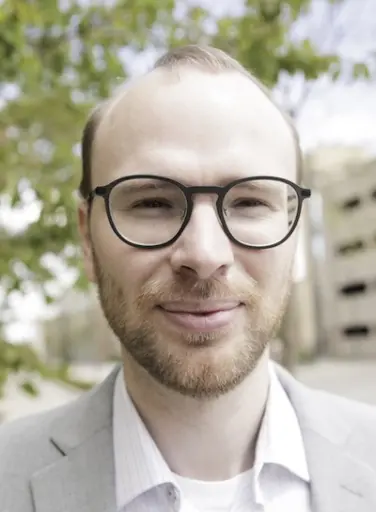Soft materials, with their ability to dramatically change shape, hold promise for applications such as soft robots that are able to sense and respond to their environment.
And now, soft materials— such as rubber or polymers that can regain their initial shape after being stretched or squeezed—could get a performance boost and increased functionality thanks to an advance from engineers at University of Wisconsin-Madison.
 Stephan Rudykh
Stephan Rudykh
Led by Mechanical Engineering Assistant Professor Stephan Rudykh, the researchers discovered a new phenomenon in how soft composite materials rearrange their internal structure at the microscopic scale. They detailed their findings Feb. 14, 2019, in the journal Advanced Materials.
Rudykh says this phenomenon can provide a powerful design tool for engineering soft materials with tailored properties.
“This is an exciting discovery because it gives us the means to control and fine-tune the properties of these soft materials by controlling their microstructures,” he says. “It enables us to control the mechanical, thermal and acoustic properties, to name a few, and to switch different properties on and off if we want.”
The researchers demonstrated and analyzed the new phenomenon using a soft elastomeric material they created with 3D printing. Inside these soft materials, the researchers embedded small particles of stiff material in a simple periodic pattern.
When they compressed the soft material to a certain point, they found that the internal stiff particles geometrically rearranged themselves in a surprising way—changing from a simple pattern into a more complicated new pattern. Crucially, this complex new pattern is very highly organized and repeating, which allows researchers to leverage it to engineer desirable new properties.
Rudykh and his team triggered the microstructure rearrangement by inducing instability in the material. “It’s like if you have a beam supporting a bridge. If you apply enough loading, it will cause instability in the beam’s structure and that can lead to buckling,” he says. “I’m interested in harnessing this buckling within a material to make it switch configurations.”
Through experiments and numerical analysis, he and his team showed they could tailor the emerging patterns by fine-tuning the soft material’s initial microstructure—for example, by adjusting the concentration of the stiff particles and their periodicity within the material.
“We can now entirely predict when this microstructure rearrangement will happen and design a particular point where it will switch from one configuration to another,” Rudykh says.
As he explores potential applications, Rudykh is excited by the rich opportunities for interdisciplinary collaboration with leading researchers across the UW-Madison College of Engineering and, in particular, within its Grainger Institute for Engineering.
“We’ve found something very interesting with this new behavior of pattern formation and there’s lots of potential,” he says. “By leveraging the college’s interdisciplinary strength in the areas of 3D printing, material design and optimization, materials science and polymer physics, I think we’re well positioned to find many applications for this advance.”
Collaborators in this research include Jian Li, Viacheslav Slesarenko and Artemii Goshkoderia, all of Technion–Israel Institute of Technology, and Tarkes Dora Pallicity, of the Institute of Engineering Mechanics at the Karlsruhe Institute of Technology in Germany. This work was supported by the Israel Science Foundation (grant numbers 1550/15 and 1973/15).